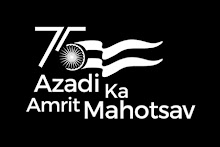


Once Madras’s famed lifeline for trade and now reduced to a stinking stretch of stagnant water and offal, the Buckingham Canal might well regain its past glory. With the passing of the National Waterways Bill in Parliament recently, the muchawaited revival of the more than two-centuries-old channel, falling under the Kakinada-Puducherry national waterway project funded by the Centre, has gained momentum. In the first phase, a 50-km stretch from Muttukadu creek to Edaiyur creek near Kalpakkam, part of the south Buckingham Canal, would be dredged and cleaned, according to guidelines issued by the Inland Waterways Authority of India (IWAI). Sources said the canal would be revived at an estimated cost of Rs 450-500 crore, and the first phase, costing about Rs 50 crore, would begin in January or February 2009. The canal, which opened in 1806 as the Cochrane canal, was more than 400km long, one of the longest ones in India. It was a major channel for trade and industry between Tamil Nadu and Andhra Pradesh. The northern part of the canal within Madras was built at the turn of the 19th century by Basil Cochrane. To promote inland water transport, the national waterway project envisages the linking of Kakinada, Eluru and Commamur canals (in Andhra Pradesh), Buckingham Canal (Tamil Nadu) and the Kaluvelly tank (Puducherry), altogether 767 km long. While the public works department would take up dredging work, creation of required infrastructure, such as terminals (fixed or floating) and modification of existing bridges and culverts, would be carried out by IWAI. After completion of the first phase, a ferry service would be started on an experimental basis to exploit the tourism potential. The north Buckingham Canal, from Ennore creek to Arangam village on the Andhra Pradesh border, a distance of 58 km, will also be made navigable, as also the south Buckingham Canal from Sholinganallur to Marakkanam, a distance of 105 km. The central portion of the canal, 7.1 km long, will, however, not be navigable due to construction of the Mass Rapid Transport System, sources added. For loading and unloading of goods, terminals will be established at Pulicat lake, Basin Bridge, Palavakkam, Alamparai, Kazhanchi and Cuddalore. To maintain navigability, the river portions would be dredged and provided with suitable structures, while backwater portions would be dredged based on requirement. River mouths would be opened if necessary.
The Buckingham Canal, which opened in 1806 as the Cochrane Canal, was once one of the longest canals in India — more than 400 km. The northern part of the canal within Madras was built at the turn of the 19th century by Basil Cochrane. Cochrane excavated what was left of the north river; his objective was to create a navigable canal up to Durga Raya Pattnam, near Nellore. Over the years, the Cochrane Canal was extended to Pedda Ganjam in Andhra Pradesh where it linked up with the canals of the Krishna and Godavari deltas. In 1875, when the Duke of Buckingham and Chandos became the governor, south India was hit by one of the worst famines. To provide relief work, the Duke engaged workers to construct an 8-km-long canal that would link the Adyar river with the Cooum at its mouth to the Cochrane Canal, effectively connecting Marakanam in the south to Kakinada in the north. The urban stretch came to be called the Buckingham Canal. The waterway offered a cheap mode of transport. Hundreds of boats used the canal at the beginning of the 20th century. Boats would ply on the canal stretch between Mamallapuram and Mylapore too. The canal was damaged by cyclones in 1965, 1966 and 1976.



No comments:
Post a Comment